I Quit Amazon Prime and You Can Too + You’ll Probably Save Money
Here’s why you should quit Amazon Prime. You probably don’t need it and you’re likely better off without it. We’ve also got resources for Amazon Alternatives, so you don’t have to spend all sorts of time finding better places to buy what you need.
This post is part of our Amazon Alternatives Resource Guide.

I dare you to quit Amazon Prime. I bet it’s easier than you think.
Over 200 million people subscribe to Amazon Prime, and there’s a good chance you’re one of them. For many years, I was too. I paid my Amazon Prime dues and regularly hit the ‘Buy Now’ button to fulfill my latest fancies.
After mounting frustration, however, with Amazon’s unethical behavior, questionable business practices, unreliable product quality, and unfettered growth, I cut the Amazon Prime cord, and I haven’t looked back for a second. Amazon doesn’t disclose specifically how many Prime members they have in the United States, but it appears that we are finally seeing a move away from Amazon (even if ever so slightly) as they had fewer Prime members in 2022 than in 2021.
I’m convinced you can quit Amazon Prime too. I’m not imploring you to cut ties with Amazon entirely, although I won’t argue with that. But I think that’s pretty hard to do. It’s not especially practical or realistic given Amazon’s broad participation in most major markets. In fact, their omnipresence is one of the reasons I think it’s important we redirect our spending to other companies and organizations.
The United States Government Thinks Amazon is Bad for Customers and Competition
There is a growing group of people and organizations fed up with Amazon’s domination of online shopping (which has significant negative impacts on brick-and-mortar businesses as well). Amazon brought some fresh innovation to buying and selling goods, and innovation is generally good for markets and consumers. But Amazon has gotten too big and too powerful at the expense of customers, workers, and small businesses, and the government agrees.
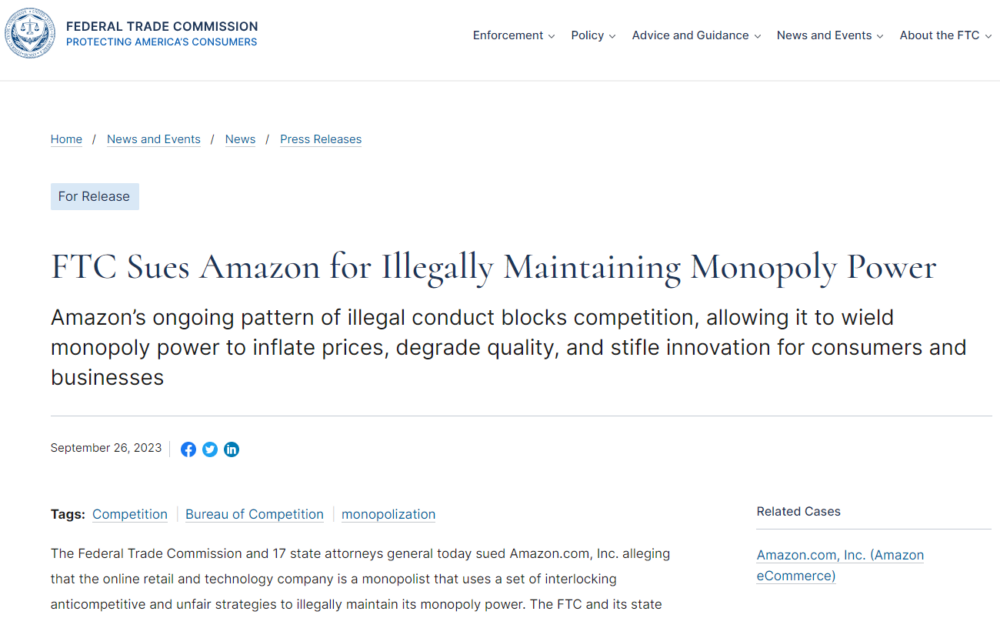
In September 2023, the United States Federal Trade Commission (FTC) and 17 state attorney generals sued Amazon for a variety of “anticompetitive and unfair strategies to illegally maintain its monopoly power.” And this is not a particularly partisan perspective. The 17 states included in the lawsuit include a variety of states across the political spectrum, notably many that tend to be especially “purple” or politically mixed states.
Amazon actually makes prices higher and hurts sellers
More specifically, the suit alleges that “The FTC and its state partners say Amazon’s actions allow it to stop rivals and sellers from lowering prices, degrade quality for shoppers, overcharge sellers, stifle innovation, and prevent rivals from fairly competing against Amazon.”
In other words, Amazon has garnered so much control over online shopping (and consequently in-person shopping as well) that the company drives overall prices higher, makes online shopping experiences worse, harms small businesses by gouging them on fees which ultimately get passed on to consumers in the form of higher prices, and prevents other companies from developing innovative ideas to make the market better for everyone. In short, Amazon is exploiting its power to harm just about everyone.
FTC focusing only on certain aspects of Amazon’s power abuses
Amazon has plenty of other bad behavior on its report card, but the government is going after only the areas where it believes it has a very strong case to root out the market exploitation and make online shopping a better and more fair experience for everyone involved (i.e. you and literally everyone you know).
Our anti-trust (i.e. anti-monopoly) laws in the United States are pretty outdated. They were established long before Big Tech changed the way basically everything works. And since at least the 1970s, our anti-trust laws have been pretty lax, meaning that they don’t do much enforcement unless it’s egregiously obvious that prices are artificially high due to lack of competition.
Monopoly power can be used in a variety of ways. However, the FTC is likely to see the most success in this particular case if it starts by targeting certain areas of power abuse like consumer prices and high seller fees that traditionally have been in the realm of monopolistic tendencies and jurisprudence.
Wait?! Amazon Makes Prices Higher?
You probably shop at Amazon because they have the lowest prices and because you pre-pay for “free” shipping via an Amazon Prime subscription. But guess what! Amazon has the lowest prices because they essentially force sellers to put their lowest prices on Amazon, not necessarily because they’re actually somehow getting you a great deal.
The FTC suit goes into greater detail about how they do this, but Amazon basically makes it next to impossible to sell items on Amazon if sellers have lower prices anywhere else (even on sale on their own sites) and uses bots trolling the Internet to enforce these measures. So sure, Amazon has the lowest prices, but only because they coerced sellers into marking up prices everywhere else and essentially forced those sellers to pay steep seller fees via a variety of mechanisms in order to have any chance of showing up on the platform.
And guess who ultimately pays those crazy seller fees? You! They get put back into the price of the product so you pay more, the seller hopefully breaks even, and Amazon makes BILLIONS in profit from our purchases. Sounds like a good deal for Amazon… (and not for you or your favorite small business).

Amazon Prime As A Loss Leader To Increase Seller Fees + Gain Market Share
Despite their marketing propaganda, Amazon is terrible for most small businesses. You’ve seen all the commercials about how so many small businesses on are Amazon, as if that’s an indication they must love it. A handful have surely found great success on Amazon, but most are there out of painful necessity, and they don’t love the egregious fees they have to pay Amazon just to have a chance at making sales.
As detailed in this report from The Institute For Local Self-Reliance (ILSR), Amazon has become an expensive tollbooth for small business third-party sellers, the precise group of sellers that makes the market so successful. Amazon has garnered such power and omnipresence in the retail market that many sellers are forced to use Amazon as their main sales channel and pay hefty seller fees associated with participation, even if it’s not particularly profitable.
Seller fees include a variety of service fees such as listing or referral fees, advertising fees, and fees for warehouse and shipping services (Fulfillment By Amazon). While founder and former CEO Jeff Bezos claims that seller fees are increasing because sellers are choosing to utilize more of these services, the ILSR report suggests that sellers don’t have much of a choice in using these services.
On their marketplace, Amazon prioritizes in search results those sellers who use more of their services. Sellers who opt not to use all of these services have trouble finding relevance in search results, even if they have the best product to match the customer’s search intention.
The Amazon Prime subscription feeds this flywheel of profitable seller fees. Prime members in particular seek out Amazon as a primary point of purchase. Consequently, fewer small businesses can thrive on other online sales channels, and Amazon third-party sellers pay various seller fees to have a chance at being seen by buyers.
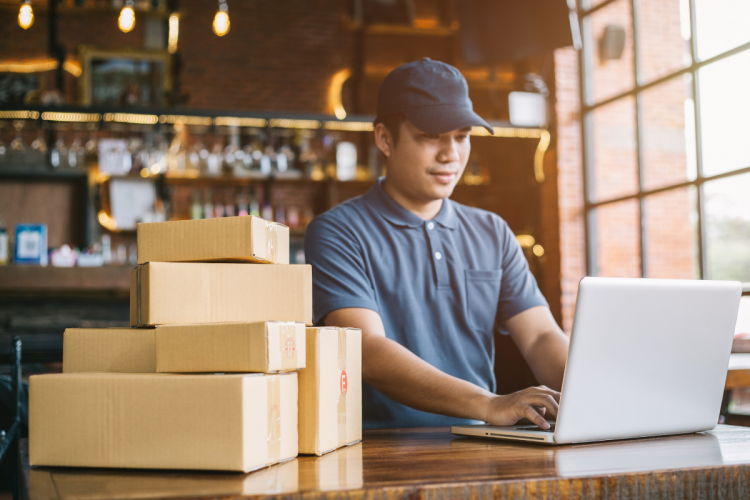
Amazon Continues to Crush Sellers
Furthermore, the fees have gotten worse over the last couple of years. Amazon is increasingly looking to sky-high seller fees for things like advertising and fulfillment services to subsidize the cost of “free” shipping via Prime. Their growth of online sales relative to seller fees is one indication of this.
As shown in the table below, online sales grew 12.5% from 2020 to 2021 and they actually fell 0.9% from 2021 to 2022, as disclosed in their 2022 10-K (annual audited financial statement). Meanwhile, sellers and advertising fees grew 26% and 58%, respectively from 2020 to 2021, and 11% and 21% respectively from 2021 to 2022. In other words, those fees are growing much faster than sales, and those aren’t fees that sellers are happy to pay. They’re paying higher fees because they feel like they don’t have a choice.
| Net Sales (in millions) | 2022 | 2021 | 2020 |
| Online Sales | $220,004 | $222,075 | $197,346 |
| Year-over-year change | (0.93%) | 12.53% | |
| Seller Services Fees | $35,218 | $31,768 | $25,707 |
| Year-over-year change | 10.86% | 26.03% | |
| Advertising Fees | $37,739 | $31,160 | $19,773 |
| Year-over-year change | 21.11% | 57.59% |
According to the latest Amazon financial statements from Q3 2023, that trend is continuing. Online sales increased by 3.7% while seller and advertising fees increased by 18.6% and 23.2%, respectively. This certainly isn’t good for small businesses trying to make a reasonable profit, and we can only assume those large fees will be passed on to customers in the form of higher prices.
How Amazon Broke Online Shopping
This video from More Perfect Union does a nice job of summarizing how Amazon’s monopolistic power harms consumers and sellers, including a discussion with the Institute for Local Self-Reliance, an organization that focuses on building strong and resilient local communities.
Why are Prime fees going up?
As Amazon increased its Prime subscription last year by $20 from $119 to $139 a year, now seems like the perfect time to call it quits. In recent years, and especially since the pandemic, Amazon has experienced exorbitant growth in revenue and profit.
According to the company’s audited financial statements in their 10-K from December 31, 2021, Amazon’s net income grew from $11.5 billion in 2019 to $33.4 billion in 2021. That’s 190% growth in just two years! The company made $33 BILLION dollars in PROFIT last year leading up to the prime fee increase. Do they really need higher Prime subscription fees?
Although Amazon doesn’t disclose much information about Prime members’ spending and related expenses for the program, we all-but-know that Amazon Prime is a loss leader for the company. With some rough math, if 200 million members pay $139 annually, Amazon earns $23.8 billion in annual subscription fees. They disclosed in the 2021 10-K that they paid $13 billion for video and music content that is offered free with Prime subscriptions. Certainly, the company spends far more than the remaining $10.8 billion on shipping costs marketed to customers as free Prime shipping.
Amazon uses Prime subscriptions to entice customers into choosing Amazon as a first (and sometimes only) channel for online shopping. As more customers succumb to the tantalizing “free” shipping and “free” entertainment content included in Prime subscriptions, more people prioritize Amazon’s marketplace for online shopping and steer away from other consumption channels (that are often more profitable and autonomous for small business sellers).
Amazon can increase Prime prices because they’ve changed consumer habits and Prime subscribers are addicted to the immediate gratification of fast and “free” shipping.

Unlike most public companies but consistent with many of its Big Tech counterparts, investors care less about Amazon’s profitability and more about its seizure of market share. In other words, investors reward Amazon (and indirectly themselves) more handsomely when Amazon captures additional market share under the guise that such currently unprofitable market share (i.e. Prime customers) will reap large benefits in the future when its vast market share approaches monopolistic proportions.
Using Amazon Prime subscriptions as a major loss leader to gain massive market share pays huge dividends in stock value today and guarantees exceptional power and profit as Amazon’s monopolistic power mushrooms (unless regulation comes into play to tamper power exploitation).
And we’re now seeing the market share to monopolistic power conversion come to fruition. The unrelenting pursuit of consumer market share amassed through large losses via Amazon Prime memberships has given Amazon immense power over sellers to charge significant fees for participation in a Marketplace the sellers can’t afford to avoid. And this is precisely why it matters that we ditch Amazon Prime, redirect our “market share contribution” elsewhere, and hope that the government can win it’s case to make Amazon a better-behaved and more fair market player.

Quitting Amazon Prime Doesn’t Mean Quitting Amazon
A couple of years ago, I kickstarted the process of separating our consumption from Amazon. I didn’t quit cold turkey. Over the course of more than a year, I sought out replacement retailers for things we typically purchased from Amazon. I let our Amazon Prime subscription lapse. And I finally made the decision to more actively divest our spending from Amazon after the pandemic hit in the spring of 2020.
Because Amazon has conquered so many markets and put so many small and medium-sized companies out of business, there are certain products you may still need to buy from Amazon. I’ve heard from a few readers about non-brand-specific products they need for medical or other important reasons that they just can’t find elsewhere. I get it, and honestly, that’s an indication of why Amazon is too powerful and big. If you truly can’t find a product anywhere but on Amazon, that’s a sign that there is no competition for said product.
For the time being, buy the things you must buy from Amazon for now. But if you limit your Amazon purchases to just those things you need and truly can’t find elsewhere, I bet shipping costs over a year will almost always be less in total than the annual Amazon Prime subscription fee, especially as they increase the price.
Additionally, you can still shop on Amazon as needed without Prime and not pay shipping. I purchased 5 items on Amazon in 2023 and have not paid a dime in shipping costs simply by purchasing the minimum dollar value of items to get free shipping. If the item I need doesn’t reach the threshold, I add a common item I’ll buy anyway (like dishwasher soap or toothpaste) to meet the free shipping minimum.
Amazon Web Services Comprise Majority of Amazon’s Business
As I laid out in a previous post, most of Amazon’s net income doesn’t come from its product sales. Instead, they generate 62% of their profit from Amazon Web Services (AWS); Amazon hosts a large portion of the content on the internet. We won’t be escaping AWS anytime soon.
Essentially, Amazon uses profits from its web services to subsidize its attempts to monopolize everyday consumption and, in turn, also profit from rapidly rising seller fees. Further, they have been known to utilize usage data from their web hosting to identify candidates for hostile acquisitions of successful startups. This is a prime (no pun intended) example of how their broad participation in a variety of industries gives them monopolistic-equivalent power that doesn’t fit the traditional definition of a monopoly within the current construct of our outdated United States anti-trust laws.
In short, we won’t likely divest from AWS but we can reduce reliance on retail consumption through Amazon by ditching Amazon Prime subscriptions.
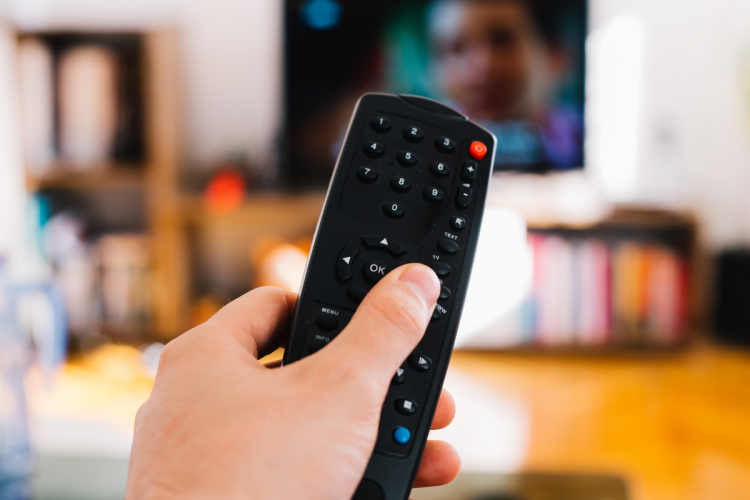
What about Amazon Prime content?
Amazon attaches convenient benefits to its Prime subscription, like Prime Video and Music. While there is some exclusive content, there is more high-quality content on the internet than one could ever consume in a lifetime. You can find plenty of amazing content elsewhere.
In many cases, you can find the same content through other distribution channels. For example, my boys like to watch a show that streams exclusively on Amazon Prime. However, the show also airs periodically on PBS. We use our YouTubeTV subscription to record each episode of this particular show they enjoy.
After just a couple of months, we had a library full of episodes for them to watch on-demand.
Amazon has some exclusive content you truly can’t watch through any other channel. However, I suspect that one could replace this viewing time with something else they love equally. And is that favorite show so much better than anything else available that it’s worth the annual Amazon Prime subscription fee of $139 each year?
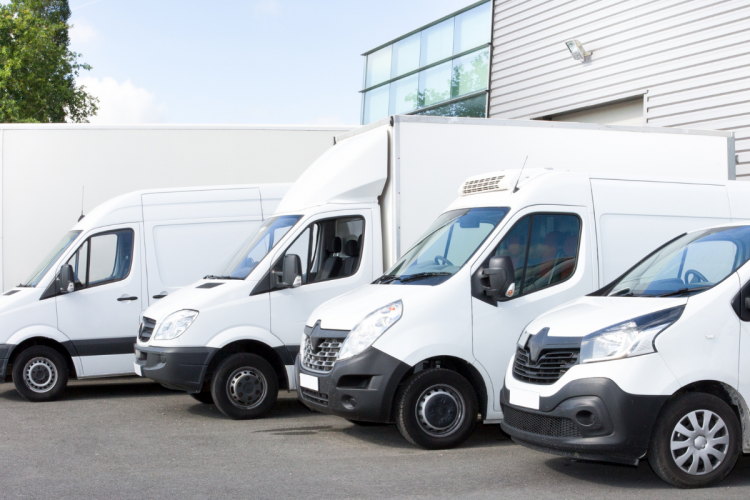
Where to buy things if not from Amazon?
In the grand scheme of shopping, Amazon is fairly new. That means that, not long ago, many of us shopped at lots of other places besides Amazon. But too many have grown accustomed to simply heading to their Amazon app anytime they feel the urge to spend. It doesn’t have to be that way.
Finding better and more ethical retail alternatives requires varied efforts depending on the item you seek to purchase. Most everyday food, health and beauty, and personal care items fill the shelves at big box stores or corner drug stores in our local communities. While that used to require a trip into the store to collect said purchases, most of those stores now offer curbside pickup and/or delivery to streamline the shopping process.
More specific product searches may require a bit of research to find an alternative online retailer or local small business that stocks the product. While I can’t create a comprehensive list of all the small businesses in your area with different types of products, I am working on developing Amazon Alternatives lists for a variety of products to help you more easily divert or reduce your spending and support companies other than Amazon. Head to our Amazon Alternatives Resource Guide for a growing collection of posts about where to purchase all sorts of products to avoid Amazon.
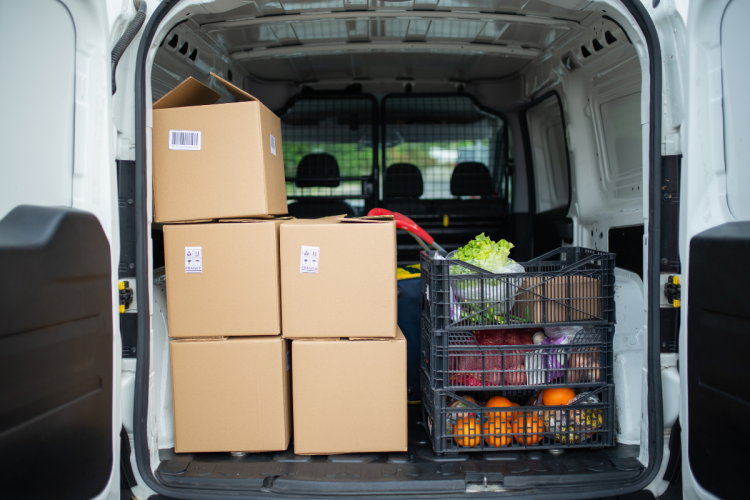
Quit Amazon Prime and Save Money
While altruistic reasons won’t compel everyone to ditch Amazon Prime, I bet many people would save quite a bit of money if they stopped subscribing to the consumption drug. Amazon Prime makes shopping too easy (yes – consumption can be too easy). Prime intentionally removes barriers to hitting the Buy button that might otherwise encourage us to think twice about whether or not we actually need something new.
As I shared with LifeWire, “Without an Amazon Prime account, I have an opportunity to take a pause and think about another way to obtain the item. In many cases, I realized I already have something else that works, I can borrow it from a neighbor, or I just don’t really need it at all.
I think the natural barriers to consumption that Amazon Prime removes or diminishes—by design, I understand—are actually helpful in reducing overconsumption, and I wish more people would consider whether Amazon Prime is actually serving them well in its entirety.“
On several occasions, I intended to buy something new that I felt I needed. Without the simplicity of simply stoking the Amazon profit flames, I took a moment to pause and think about how else I might be able to fulfill this need. In some cases, I already owned something that was perfectly suitable. In other instances, I requested the item in our local Buy Nothing group. And when I did in fact need to purchase something new, I found a local store, online alternative, or even a competitive big box store to patronize.
Amazon taking over the world is not inevitable, despite what some seem to think. By and large, we choose to support Amazon. We choose to subscribe to Amazon Prime and buy into their subpar business practices.
But for a few exceptions, Amazon is not increasing access to important products or making life more affordable for those on the margins. Amazon is suffocating small businesses, which reduces local economic flourishing. In some cases, this also reduces accessibility for those in the communities where the small businesses once thrived when those local businesses must close their doors.
Instead, Amazon’s monopolistic rise to dominance shifts profits from a diverse array of small businesses spread out through communities around the country and the world to Amazon shareholders, most notably, Jeff Bezos, one of the richest people in the world and owner of 14% of Amazon according to the 2021 Proxy Statement. Led by his maniacal ego, Bezos preys on our collective gluttonous and insatiable consumption.
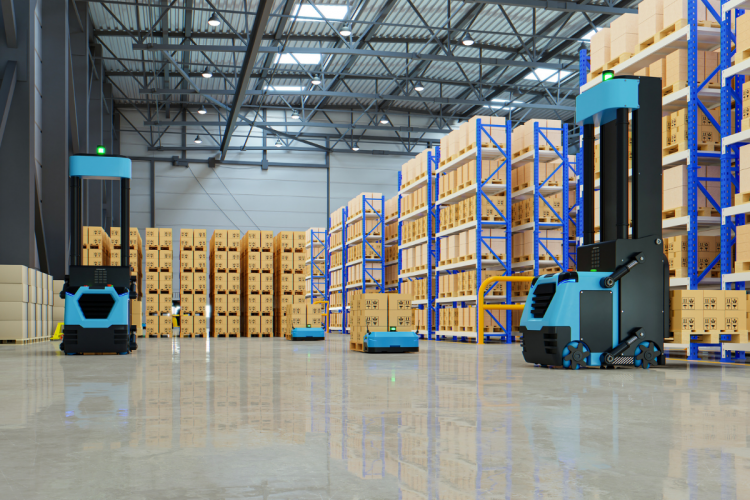
Smaller Shared Marketplace Platforms
A growing number of “Amazon intermediaries” or aggregators have popped up that invest in or purchase small brands selling well on Amazon. These companies take over and consolidate many back-office operations for these small brands to streamline marketing and growth.
Consolidating back-office functions and providing management advisory services through these types of companies isn’t necessarily bad. In many cases, small business owners don’t have either the resources or the interest to invest in larger inventories and growth campaigns, even when the market demand supports it. It can be a win-win for both parties.
But these aggregators are reinforcing the monopolistic powers of Amazon, backed by billions of dollars of venture capital investment. They’re making it easier for sellers to integrate even more deeply with Amazon in a retail space that increasingly leaves little room to operate outside of Amazon. And just like the small business sellers they acquire, these aggregators pay hefty fees to Amazon in exchange for warehouse and distribution services as well as sponsored placement on the customer interface.
These aggregators have lots of investment capital at their disposal. Instead of propping up the retail giant that certainly doesn’t need any further reinforcement, I’d love to see the aggregators utilize other sales platforms or even begin to create an environment of shared shopping platforms for their growing portfolios that are less consolidated and exploitative than Amazon.
Especially if we make a concerted effort to search for products outside of Amazon’s website, we search for things we want and need to buy through search engines. The search engines aggregate purchasing options through places like the Shopping tab on Google.
In other words, we already have the means to find what we want with one search that covers multiple shopping platforms. Patronizing a variety of retailers or having shared shopping portals owned by these small business aggregators shouldn’t create a lot of friction in the purchasing experience for consumers.

Amazon’s Dominance Reflects A Consumption Problem
As I mentioned above, I recognize Amazon meets true needs for a small set of circumstances. But by and large, there are loads of reasonable alternatives for the things we buy from Amazon, and we don’t even need to buy most of what we’re buying.
We don’t need Amazon to exist in its omnipotent form. It simply feeds our consumption addictions. We have to stop buying so much stuff and stop buying it all from Amazon.
Nothing is a great deal, even when it’s the least expensive option on the market if we don’t need it in the first place. No amount of investment from Amazon in electric delivery vans or wind farms will swell the storm of climate change if we keep consuming so much crap. And we don’t need everything delivered in two hours or even two days.
Our collective obsession with Amazon is mostly a mindset problem, and we have a choice to change. I challenge you to consider if you can quit Amazon Prime. If you’re being honest with yourself, I bet you’ll be better off without it.

Jen Panaro
Jen Panaro, founder and editor-in-chief of Honestly Modern, is a self-proclaimed composting nerd and advocate for sustainable living for modern families. To find her latest work, subscribe to her newsletter, Stepping Stones.
In her spare time, she’s a serial library book borrower, a messy gardener, and a mom of two boys who spends a lot of time in hockey rinks and on baseball fields.
You can find more of her work at Raising Global Kidizens, an online space to help parents and caregivers raise the next generation of responsible global citizens.








Very well written! The article offered a couple more reasons for me to end my Prime membership. I have learned that once found on Amazon, go to the manufacturer and you often may purchase the product at the same or even reduced price BUT you must wait 3-5 days for arrival. Always a trade off, but I would much rather assist a smaller company than continually finance a multi-billion $ corp.
Thanks! Glad you liked it. 🙂
I have an Amazon addiction and I know it and I admit it. I don’t like it but I feel like a drug addict, seriously. It’s like I never intended this to happen but here I am. I want to cancel my Prime membership but I feel like I will lose out on whatever it is that my mind has convinced me I need to have. I know I need help but I’m afraid – truly!!!!
I think this is the first blog comment I’ve ever left, but I’m SO glad this post has finally given me the nudge I’ve needed for a very long time. My New Year’s resolution is to break up with Amazon! Thank you for reminding me of my values and sharing the truth.
Oh thank you!! I’m so glad we can do this together. 🙂 There are so many great options to get what we need outside of Amazon.
Excellent article Jen! All these things became gradually apparent to me over the years of using Amazon. I went from “loving” Amazon to just plain “hating” them as the evil became obvious. We quit Amazon Prime in 2019 and never looked back. We actually have NEVER used them since (even without Prime membership). People ask me “well, where do you get things from?” and I say “everywhere else!”. Seriously, all the same goods are available in a lot of other places. If it’s exclusively on Amazon, then it’s probably not a good item and a knock-off or Amazon designed item to put someone else out of business. And people are surprised when I tell them that Amazon does NOT always have the lowest price. Most of the times we buy the item at the same price or lower elsewhere! And we get free shipping 90% of the time from these other places.
Anyway, I am glad that there are others waking up to how detrimental that Amazon is, and deciding to rid them from their lives. This article is an excellent way to explain to people that don’t realize how bad Amazon is for our lives. Kudos.
Thanks for sharing! So great to hear.